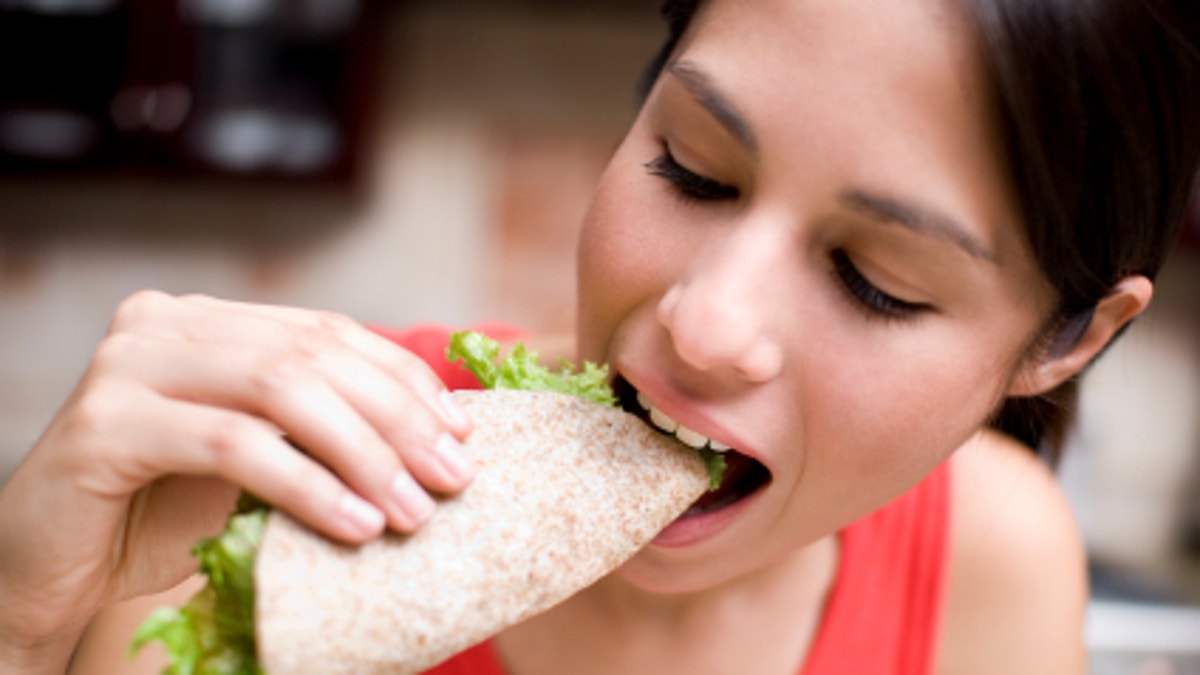
We do it in the car, on the train, in front of the TV, on the phone, and even in bed. For too many of us, snacking has become so automatic that our brains barely register the hand-to-mouth motion. And it's not as if we're all reaching for diet-friendly apples: A 2010 study from the University of North Carolina found that most of us eat nearly 600 calories a day--roughly a third of our food--in snacks rather than meals.
Evidence of this national snack-fest is all around us. We "prefuel" and "refuel" before, during, and after workouts, taking in far more calories than we'll ever burn on the treadmill or elliptical trainer. Kids snack in the morning at school, again when they get home, and during halftime at their soccer, lacrosse, and basketball games. Even toddlers are in on the action.
Strollers come complete with compartments to hold snacks and drinks, lest the little ones go hungry for more than 5 minutes. As a result, snack foods have grown into a huge industry, totaling $64 billion a year in sales.
As if we didn't already have enough snack opportunities, chain restaurants are beefing up their so-called snack menus, which are designed to draw in customers during off-hours. Since 2007, the number of restaurant items listed as "snacks," "snackable," or "snackers" has grown by 170 percent.
Is there such a thing as healthy fast food?
Is it any wonder our collective waistlines have ballooned in just a few generations? "In 1960, a candy bar was a treat that you saved up to buy," says Brian Wansink, a professor of applied economics and management at Cornell University and the author of Mindless Eating. In those days, a mere twinge of hunger was not regarded as a reason to indulge. Hunger is a natural state, just like being tired, sad, or cranky. While it's not pleasant, it's not an emergency either.
Think back to when you were a child and asked your mother for a snack before dinner. She didn't treat it as if it were some kind of crisis. She simply said no, warned you against "spoiling your appetite," and told you to go outside and play.
So what happened? Beginning in the 1970s, personal income increased--while government policies lowered the price of key snack-food ingredients such as high fructose corn syrup. Manufacturers hired food scientists, who fueled the trend by learning what tastes consumers found irresistible, even addictive (namely, sugar, salt, and fat). Then they figured out how to pack those flavors into betcha-can't-eat-just-one combinations. On top of it all, business schools began to churn out a new breed of executive, the brand manager, who was trained to market products aggressively as fun, exciting, and even good for boosting your energy.
"The business plan of the modern food company has been to put their foods on every street corner, making it socially acceptable to eat 24-7," says Dr. David Kessler, former commissioner of the FDA and the author of The End of Overeating.
The result has been a nutritional disaster. In their natural state, whole foods may be high in fat or sugar, but they're rarely high in both. Today we have man-made snack foods with a tantalizing combination of fat and sugar rolled into one. "Foods have become so 'hyperpalatable' that they're now capable of hijacking our brains the same way that nicotine and alcohol do," says Ashley Gearhardt, the lead author of a Yale University study on food addiction.
See which snacking habits cause weight gain—and how to fix them so you eat less.
7 Snacks Under 100 Calories
1. 2 (6") corn tortillas + 2 Tbsp salsa
2. 1 cup pineapple chunks + 2 tsp shredded coconut
3. 25 pistachios
4. 1/2 cup Cheerios + 1/2 cup fat-free milk
5. 4 oz honey Greek-style yogurt
6. A handful (1/8 cup) of dry-roasted pumpkin seeds
7. 5 fresh apricots
